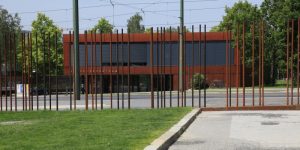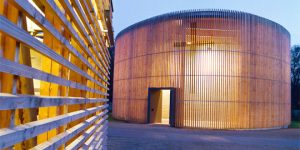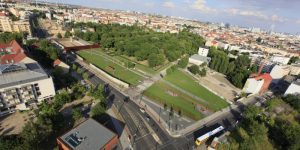Berlin is a city where history is not only found in its grand landmarks and museums but also beneath the surface and along the remnants of its once-divided streets. From wartime bunkers and escape tunnels to powerful murals and memorials, Berlin offers a deep and immersive look into its turbulent past.
This guide explores five must-visit historical sites that reveal different facets of the city’s history: the Berliner Unterwelten Museum, the DDR Museum, the East Side Gallery, the Mauermuseum, and the Berlin Wall Memorial. Each of these locations offers a unique perspective on the resilience, creativity, and courage of those who lived through Berlin’s most defining moments. Whether you’re interested in underground infrastructure, daily life in East Germany, artistic expressions of freedom, or the stories of those who risked everything to escape oppression, these sites provide a compelling and unforgettable experience.
1. Unearthing Berlin’s Hidden History
📍 Location: Brunnenstraße 105, 13355 Berlin, Germany
🔗 Website: https://www.berliner-unterwelten.de/
The Berliner Unterwelten Museum provides insight into Berlin’s underground infrastructure and its historical significance. Located beneath the city, the museum focuses on the development and use of bunkers, tunnels, and other subterranean structures. These spaces played critical roles during World War II and the Cold War, reflecting the city’s strategic and defensive needs during these periods.
The museum offers guided tours that highlight various aspects of Berlin’s underground history, including air-raid shelters, escape tunnels, and the engineering behind these constructions. Visitors can learn about the practical and historical context of these spaces and their role in shaping Berlin’s modern urban landscape.
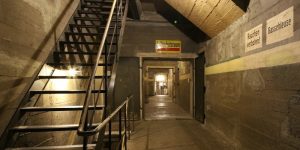

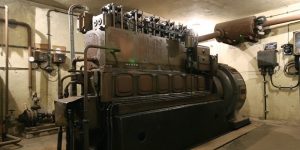
- Tour 1: Dark Worlds
Explore a restored World War II air-raid shelter. Learn about life during the bombings, the construction of bunkers, and the measures taken to protect citizens during the war. - Tour 2: From Flak Towers to Mountains of Debris
Discover the history of Berlin’s massive flak towers and their transformation into post-war landmarks. This tour highlights how the city repurposed these imposing structures. - Tour 3: Subterranean Escape Routes
Delve into the stories of escape attempts during the Cold War. This tour covers tunnels used by East Berliners trying to flee to the West and reveals the challenges of such daring escapes. - Tour M: The Berlin Wall and Its Underground
Investigate the connection between the Berlin Wall and the city’s underground. Explore tunnels and other hidden spaces that played a role in the city’s division and eventual reunification. - Special Exhibitions
The museum also hosts rotating exhibitions that focus on various aspects of Berlin’s underground history, architecture, and wartime strategies.
2. An interactive journey into a bygone state
📍 Location: Karl-Liebknecht-Str. 1, 10178 Berlin, Germany
🔗 Website: https://www.ddr-museum.de/de/ihr-besuch
The DDR Museum is unique, extraordinary and one of the most visited museums in Berlin. They show the everyday life of a bygone state first-hand. History is conveyed in a lively, interactive and yet scientifically sound way. The exhibition encourages its visitors to touch, feel and interact, so as to gain a fun and rich understanding of the past.



The exhibition covers key themes such as daily routines, the Berlin Wall, and the Stasi. Visitors can explore authentically reconstructed spaces, such as a typical GDR apartment or a Trabant car, and interact with objects, multimedia displays, and archival materials to gain a deeper understanding of life behind the Iron Curtain.
History is presented in an engaging and scientifically accurate way, making it suitable for curious minds of all ages. Whether you want to learn about the state-controlled economy, education, or leisure activities in the GDR, the DDR Museum provides a comprehensive look at a bygone era.
3. Borders, art, and the city: How the East Side Gallery came about
📍 Location: Mühlenstraße 3-100, 10243 Berlin, Germany
🔗 Website: https://www.eastsidegalleryausstellung.de/
118 artists from 21 countries created the East Side Gallery in Berlin after the fall of the Wall in 1989. In the summer of 1990, they painted for the first time on the east side of the Berlin Wall, which had divided Berlin for 28 years. Their works of art are messages for a united Europe from the upheaval of 1989/90 and memories of life in dictatorships or in a divided Germany.
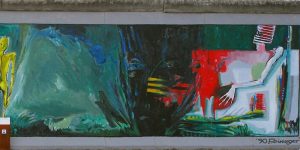


For more than 30 years, famous Wall paintings such as the “Bruderkuss” and the “Trabi” have been attracting people from all over the world to the longest open-air gallery in the world. In a new open-air exhibition, artists tell the stories behind their pictures. Together with people from the neighbourhood, they take a look at life in the divided city, the fall of the Wall and German reunification. It raises questions about the preservation of a monument in the metropolis of Berlin: What open spaces do we preserve? Why do we need public art?
4. The Mauermuseum: A Testament to Courage and the Fight for Freedom
📍 Location: Friedrichstraße 43-45, 10969 Berlin, Germany
🔗 Website: https://www.mauermuseum.de/
The Berlin Wall Museum, also known as the Mauermuseum, is located near the historic Checkpoint Charlie and serves as a powerful tribute to the struggle for freedom during Berlin’s division. Founded in 1962, the museum preserves and shares the stories of those who lived under the shadow of the Wall, as well as the extraordinary individuals who risked everything to escape.

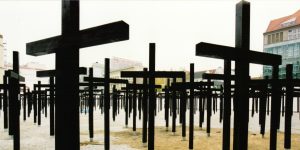
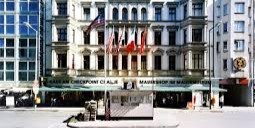
The exhibits showcase ingenious escape methods, such as homemade hot air balloons, tunnels, and even modified cars, providing insight into the creativity and determination of those who sought freedom. Visitors can also explore artifacts, documents, and photographs that capture the political and social context of the time.
Through its displays, the Mauermuseum highlights not only the challenges of life during the Cold War but also the resilience and courage of those who resisted oppression. It stands as a reminder of the importance of human rights and the enduring desire for liberty.
A visit to the Mauermuseum offers an in-depth look at Berlin’s history and the inspiring stories of those who fought for freedom and unity.
5. Berlin Wall Memorial: A Living Tribute to the Fight for Freedom
📍 Location: Bernauer Str. 111, 13355 Berlin, Germany
🔗 Website: https://www.berlin.de/mauer/orte/gedenkstaetten/gedenkstaette-berliner-mauer/

